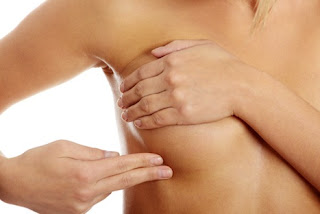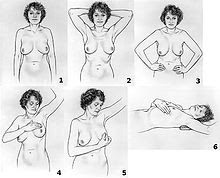Breast health Tips
Sometimes we are ignoring some
problems especially health related. If we care any problems in the primary
stage then we can cure it. Now a day it’s seen that women are suffering more than
before about breast problems. One the causes are breast cancer. Here some discussion
about it.
The best able affairs to ascertain breast blight aboriginal has 3 steps:
- An analytic breast assay by a medical able at atomic every 3 years from age 20 and already a year from 40.
- A mammogram or breast x-ray every year from age 40. If you are beneath 40 years but no history of breast blight in your ancestors or accept added apropos about the accident you take, ask your doctor back you activate to get a mammogram and how often.
- Tests account breast brooding from age 20. Assay of brooding takes alone account but can be the best time spent in your life.
Self-exploration
When a new node can be a
harmless cyst filled with fluid or a non-cancerous formation of fibrous tissue.
It can also be a malignant tumor or cancerous. En reality most of the changes
that are found during self-examination are not cancerous. All women at age 20
should begin to be tested for self-examination at least once a mess. El best
time to do it at the end of your period, when breasts are less tender. If you
are not menstruating, perform the exam on the same day of the month every
month. That is, if you choose the first of the month, which is the first of the
month for every month in a row. Mothers who are breastfeeding should be tested
after feeding the child.
The examination of breast
self examination is carried out in two stages:
Looking
Feeling
Looking
- The best ways to see your whole chest are using a wide mirror.
- You reach a point where you can determine what is normal for your breasts so you can detect any change immediately.
- With hands on hips, pressed down to tighten the muscles of the chest and lean the upper torso forward. This will help detect depression - the feeling of tightness in the skin or nipple, which can be caused by a tumor that is growing.
- Look at the shape, size, color and texture of the skin of your breasts. First you fall your arms to the side than arms rose. It is normal for one breast bigger than the other.
Feeling
- The feel the breast is done more effectively lying down.
- Place a pillow or folded towel under the shoulder.
- Use the pads of your fingers because these are more sensitive than the tips.
- When you move your hand, do not lift the fingers of the skin; keep them in the breast to prevent any part remains unexamined.
- Covers the entire surface
- When finished, lower the arm and begins the same steps with the next breast.
- If you're not sure what you feel is normal, see a doctor and ask their opinion.
- Extend your arm out at an angle of 90 ° so that the left hand just above your head. This is to extend the breast tissue more evenly.
- Examine the entire breast including locations where breast tissue may have from the armpit to the sternum and from the collarbone to the bra line.
- Using three fingers travels through your breasts in small circular motions. Check pressure as mild, moderate, and firm. This will examine the entire thickness of your breast.
Mammograms
A mammogram is a test done
to check for problems or problems in the female breast. The test uses a special
x-ray machine to take pictures of both breasts. The results are recorded in a
film that your health care provider can examine.
Mammograms look for breast
lumps and changes in breast tissue that may eventually become problems. They
can find small nodules or masses that not a health care provider or woman can
feel when doing a physical breast examination. Nodules or lumps in the breast
can be benign (noncancerous) or malignant (cancerous).
If a lump is found, the
health care provider will order a biopsy, which is an exam that removes a small
amount of tissue from the lump and area around it. The tissue is sent to a
laboratory for signs of cancer or changes that would indicate the likelihood that
this will happen. Early detection of breast cancer means that women have a
better chance of surviving the disease. There are also more options for
treatment when the disease is detected early.
Fibroadenomas
This kind of tumor is not
a disease itself, but only higher growth in some areas of the breast. They are
especially common in women under thirty years, and is considered the most
common breast tumor before menopause. Is related to hormonal changes in women,
and no clear relation to the use of oral contraceptives. It is very rarely
malignant transformation. Almost never hurt, and their growth is usually slow.
They are very rounded, very mobile within the breast and can be diagnosed
through a combination of clinical examination, mammography, ultrasound and
needle aspiration and fine needle cells.
Fibroadenomas in women
not always need to be removed. At least one in three of these tumors is reduced
in size or disappears by itself within two years. You can opt for their removal
in cases of rapid or substantial in size, cosmetic deformity of the breast,
discomfort in the nodule, or when the woman is worried and creates some
anxiety.
Fibrocystic breasts
























I like your style in critical thinking. I have repeatedly received information from various sources that is a breakthrough between other questionnaire tools.
ReplyDeleteBreast Enlargement
This is very good information.i think it's useful advice. really nice blog. keep it up!!!
ReplyDelete- breast cancer assay